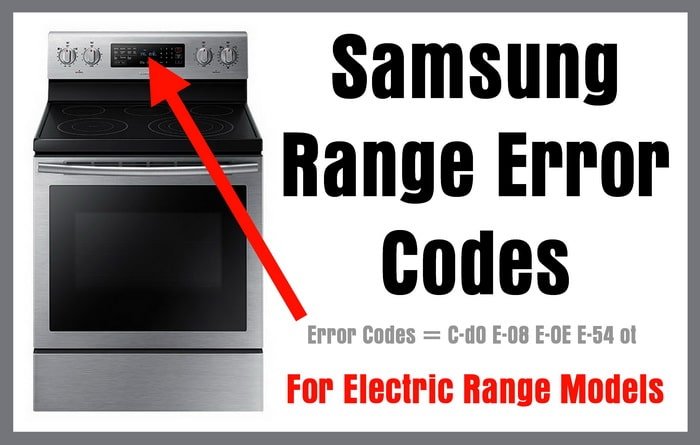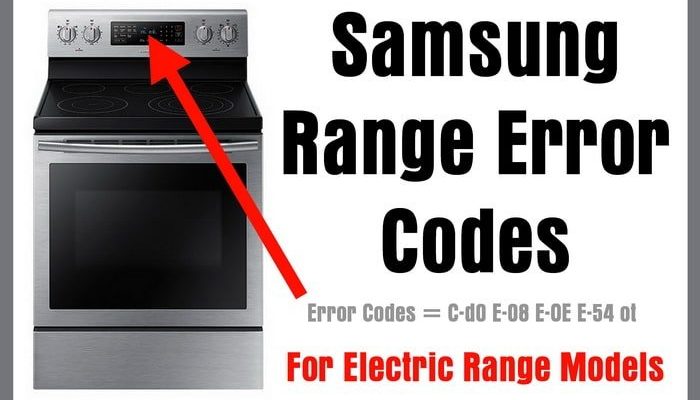
Samsung ovens are smart appliances that use error codes to tell you what’s going wrong. Error code E1 is one of those signals. Think of it as your oven’s way of waving a flag to get your attention. It’s a general indicator of a temperature sensor issue, but there’s no need to panic. Just like a doctor diagnosing symptoms, we can figure out what’s causing this and how to remedy it. So, let’s break it down into bite-sized pieces, just like you would when preparing an ingredient list for a complex recipe.
Understanding the Error Code E1
First, let’s talk about what error code E1 actually signifies. Imagine your oven’s temperature sensor as its internal thermostat. It’s responsible for letting the range know if it’s too hot or too cold. Now, if this sensor isn’t functioning properly, your oven can’t maintain the right temperature, much like a broken air conditioner struggling to keep your house cool on a sweltering day. This is the primary cause of the E1 error code.
You might be wondering how this happens. One common reason is a loose connection. Over time, just like how shoelaces can gradually untie themselves without you noticing, the connections of the temperature sensor can become loose. This leads to inaccurate readings and triggers the error. Another reason could be a faulty sensor, which is basically the sensor giving incorrect temperature readings. Think of it as a broken thermometer that reads 80°F when it’s actually freezing outside.
So, what can you do if faced with this issue? First, ensure the oven is cool and then check the connections to the temperature sensor. Tightening a loose connection could be an easy fix. If that doesn’t work, it might be time to consider replacing the sensor entirely. Just remember, handling electrical components should be done cautiously. If you’re not comfortable doing this yourself, it might be a good idea to call a professional technician for a more thorough check.
How Temperature Sensor Problems Cause Error Code E1
Delving deeper into the temperature sensor, let’s consider its role. Think of it like how your phone’s GPS relies on accurate signals to know where you are. Similarly, your oven depends on the sensor to detect the interior temperature accurately. If the sensor is off, it’s like your GPS telling you you’re in the ocean when you’re actually on land.
Temperature sensors can malfunction due to wear and tear. Imagine if you used the same pair of running shoes for years; eventually, they’d get worn out. Similarly, with time, sensors can lose their accuracy. Corrosion, dirt, or physical damage to the wiring or sensor itself can also lead to failure. When this happens, the oven can’t properly gauge its internal temperature, and that’s when the pesky E1 error pops up.
What’s next if your sensor is faulty? A replacement is typically the best course of action. While it might sound a bit daunting, replacing a sensor is often straightforward. It’s akin to swapping out a dead light bulb with a new one—it just takes a little time and the right tools. However, if you’re unsure, hiring an appliance repair specialist ensures the job is done right and safely.
Other Potential Causes and Fixes
While the temperature sensor is the star of the show, sometimes other factors play a role in triggering that E1 code. For instance, an outdated or corrupt firmware could cause glitches in how your oven reads its sensors. It’s like trying to use an old software program on a new computer—sometimes things just don’t run smoothly. Keeping your oven’s software up-to-date can prevent these processing hiccups.
Another thing to consider is the oven’s wiring. Over time, wires can become damaged, leading to inconsistent power flow. This is similar to a frayed charging cable that only works when twisted a certain way. If your oven’s wiring is the culprit, seeking professional assistance is the safest route, as working with electrical components can be dangerous without proper knowledge.
Ultimately, prevention is key. Regular maintenance, including cleaning and checking connections, can keep your oven running smoothly. Think of it like taking your car for a regular check-up; these small efforts go a long way in avoiding bigger problems down the road.
In conclusion, facing a Samsung oven or range error code E1 doesn’t have to be a nightmare. By understanding what it means and knowing how to tackle it, you can often resolve it with confidence. When in doubt, professional help is always a call away, ensuring you can get back to cooking your favorite meals in no time. Remember, appliances also need a little TLC to keep serving us well!
